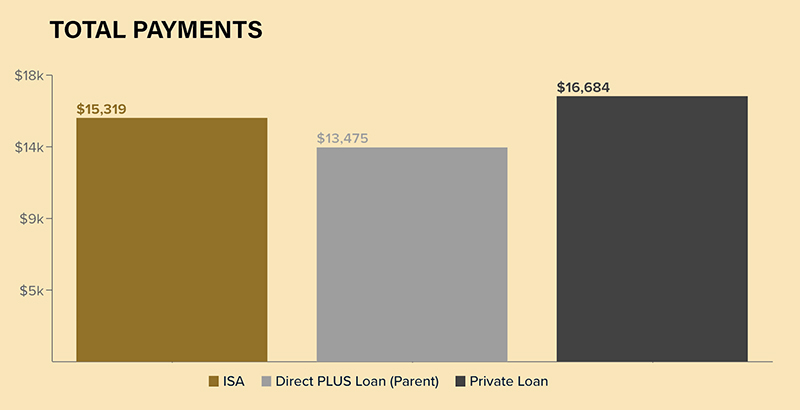With Income Share Agreements Instead of Student Loans, Purdue University Pioneered Program That ‘Makes School Available to Those Who Want to Come’

To make higher education more affordable and accessible, Purdue University has taken such steps as to freeze tuition, offer liberal arts degrees in three years instead of four, reduce dorm costs and create a unique partnership with Amazon to reduce textbook fees. But the university also pioneered a fresh financing concept: an income share agreement program, dubbed Back a Boiler, that provides an alternative to traditional student debt.
Instead of taking out a private or parent-co-signed loan, students who opt for ISAs receive education funding from their school in exchange for an agreed-upon percentage of postgraduation income over a defined number of years. Purdue’s program is in its fifth year and currently includes 1,668 contracts worth $18.1 million to its students and graduates.
“This is for students who exhausted grants, scholarships, federal loans and might otherwise be going to private loans,” says Mary-Claire Cartwright, vice president at the Purdue Research Foundation and manager of the Back a Boiler program. “There are groups of people who like to bootstrap their own education or are averse to traditional debt. There can be a lot of really unique reasons students will choose an income share agreement, and it is amazing how many different stories people have.”
Back a Boiler is open to students entering their second through fourth years on the West Lafayette, Indiana, campus who show progress toward their degrees. Based on a student’s year in school and declared major, “we are able to put people into categories” for contracts, Cartwright says. Students with a major that traditionally earns more immediately following graduation may pay a smaller percentage of income for a shorter term versus a higher percentage for a longer term on a traditionally lower-earning major. Either way, she says, the program is designed that “each person is returning about the same payment stream at the very end.”
As an example, if you’re entering your senior year as an economics major and take an ISA of $10,000, you’d pay 3.11 percent of an anticipated $49,000 salary for 100 months. At the end of the contract, you would have paid back $15,036. A traditional private loan with a 9.5 percent fixed interest rate would cost the student $17,126 by the end of a typical 10-year term. Purdue students must take a quiz to exhibit a full understanding of the program’s financial impacts.
Andrew Hoyler participated in Back a Boiler as he pursued his dream of becoming a pilot. “It was looking like my first few years out of Purdue were going to be really rough, because my student loan would be so high,” he says. “I would have had to live at home and work two or three jobs to avoid falling into even greater debt.”
Graduate Savannah Williams started participating in Back a Boiler as a sophomore, saying it gave her “peace of mind” that she could enter the workforce without carrying any debt.
Students can pause payments to travel or start a family, extending the terms by the amount of time taken off. No interest accrues during an ISA contract. Purdue has a $5,000 annual minimum on an ISA, and funding may be available for up to 15 percent of expected annual income. Students must meet a minimum income threshold to require payback and have a maximum payment cap. They may pay back less than the amount of funding received if they don’t reach expected income levels.
The first major university to launch an ISA, Purdue provided the initial funding along with two nonprofit investors who wanted to encourage new university funding models. The second round, over $10 million from late 2018, included 11 investors and will help the program become self-funding. Cartwright says a third round may be coming.
Philanthropic donors have been drawn to the ISA model, she says, with the expectation that after seven years the initial investment is returned to the fund and helps additional students. Donors get the “appreciation of the donated capital stretching and helping build this self-perpetuating fund.”
Back a Boiler has shown a “universal appeal” across the school, Cartwright says. The program has funded students in 160 of the school’s 200 undergraduate majors, with recipients’ demographics similar to those of the university’s student population.
As the ISA concept continues to grow — Cartwright says she’s fielded more than 100 inquiries from other colleges, universities and workforce development programs looking to start their own — she wants to see federal regulations ensure that such programs remain transparent and above board. She’d also like students to be able to compare ISA payback percentages by major across multiple universities.
“The things we care about are affordability and accessibility,” Cartwright says. “This adds to that story and makes school available to those who want to come.”
Get stories like these delivered straight to your inbox. Sign up for The 74 Newsletter

;)
